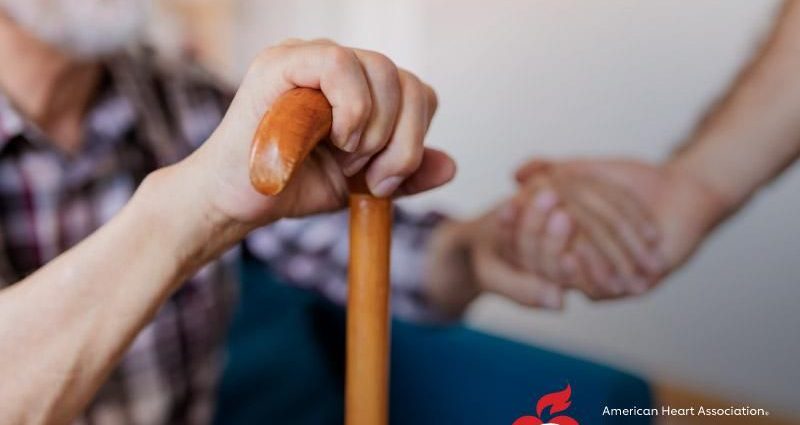THURSDAY, May 19, 2022 (American Heart Association News) — Falls pose a major risk to people with heart problems, and health experts need to do more to understand and prevent the danger, a new report says.
“Falls are very common,” said Dr. Sarah Goodlin, senior author of the scientific statement from the American Heart Association. They are associated with serious injuries, and just the fear of falling can limit a person’s quality of life.
“And falls are particularly common in adults with cardiovascular disease,” said Goodlin, medical director of geriatrics and palliative medicine at the VA Portland Health Care System in Oregon. “Yet they’re very underrecognized.”
The report, published Thursday in the AHA journal Circulation: Cardiovascular Quality and Outcomes, said basic information is lacking on how often and why people with heart disease fall, as well as on how severely they are injured.
One 2018 study published in that same Circulation journal estimated that 60% faced a moderate to high risk of falling. That’s based on records from 2,456 people hospitalized with heart disease in one Minnesota county.
Overall, the potential harm from falls is clear, said report co-author Stephanie Turrise, a nurse-scientist at the University of North Carolina Wilmington. The Centers for Disease Control and Prevention says about 36 million falls are reported among older adults each year. About 3 million of those who fall will end up in an emergency room for treatment, and more than 32,000 will die.
“Falls, especially in older adults, can be absolutely devastating,” Turrise said.
Problems can persist even after someone has recovered and becomes afraid of falling again, Goodlin said. That can start a vicious cycle where older adults with cardiovascular problems become less active and more prone to problems, Turrise said. “To keep them healthy, they’ve got to be active.”
Heart problems can lead to falls both directly and indirectly.
A heart rhythm problem, for example, might cause blood pressure to dip, which could cause someone to lose consciousness. Fall risks also could be higher in someone with diabetes, who might have foot numbness from neuropathy, or in someone recovering from a stroke, who might have weakness on one side, Turrise said.
The report says people with heart failure, a condition in which the heart and circulation do not circulate blood adequately, and irregular heartbeats called arrhythmias might be at higher risk of falling than those without these conditions.
Medications to treat cardiovascular conditions can cause side effects such as dizziness, blurred vision, confusion or other problems, Turrise said.
“I can’t tell you how many older adults are on diuretics for heart failure or for blood pressure management,” she said, “and it increases their urinary frequency, and they get in such a hurry to make it to the bathroom that they fall.” Diuretics also can cause the person’s blood pressure to drop when they stand, making them lightheaded, Goodlin said.
Medical teams need to take note, Turrise said. “We need to be aware, and we need to act.”
People can be embarrassed to admit they fell, Goodlin said. So, a “really simple” first step for a health care team would be simply asking patients about falls. Health care professionals should also watch patients walk, and if they seem off balance, consider sending them to a physical therapist for a more in-depth evaluation.
“One of the fundamental things that we advocate is checking blood pressure when the person has been standing for three minutes,” Goodlin said. That can alert a care team to health problems or medications that might be causing worrisome dips.
Teams also need to think holistically, she said. A cardiologist who rules out a heart-related cause for a fall shouldn’t dismiss the problem, because “it’s still important to sort out why the person fell and to intervene to try to prevent the next fall.”
For patients, Goodlin said, the most important thing is to be honest with their doctors and nurses, even if they are embarrassed to bring it up, and to say they have fallen or that they’re afraid of falling when they walk.
“There are things that can be done to improve their situation,” she said. “Certain exercises can improve balance and safety, so working with a physical therapist can help.”
It’s essential for people who are given assistive devices to use them, Goodlin said. Some people don’t want to use a cane or a walker because they think it makes them look old. “You look a whole lot older in a hospital bed with a hip fracture than you look being safe,” she reminds her patients.
Turrise said people also can ask an expert, such as their doctor or pharmacist, to review their medications to see what might be contributing to falls.
More research could lead to better ways to protect and treat people, the report says. Meanwhile, “there’s really a partnership between adults who have cardiovascular disease and their doctors and nurses,” Goodlin said. “Adults need to feel comfortable talking to doctors and nurses about falls and safety.”
American Heart Association News covers heart and brain health. Not all views expressed in this story reflect the official position of the American Heart Association. Copyright is owned or held by the American Heart Association, Inc., and all rights are reserved. If you have questions or comments about this story, please email editor@heart.org.
Copyright © 2025 HealthDay. All rights reserved.

